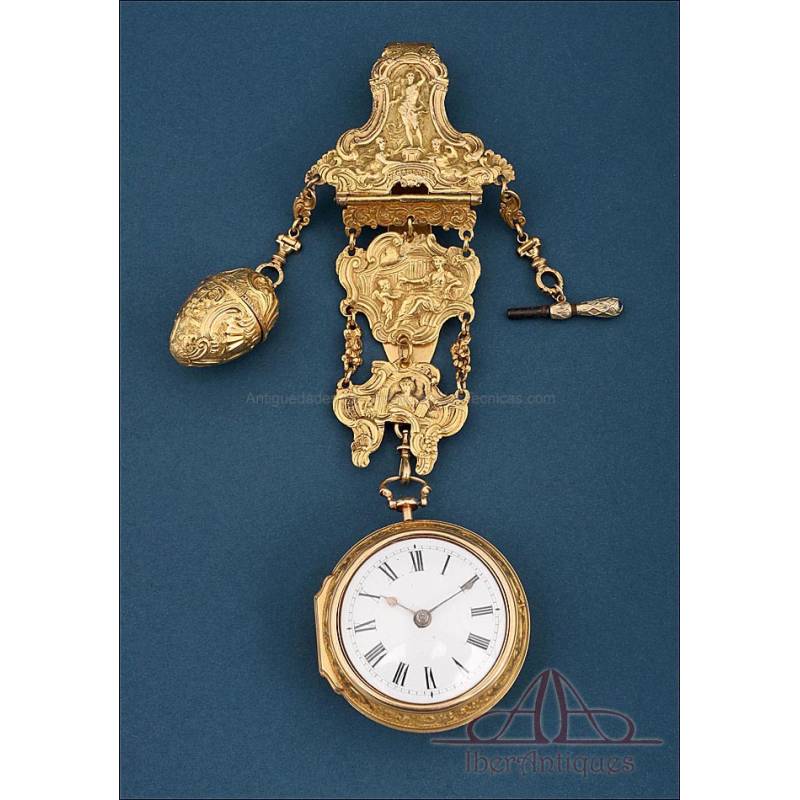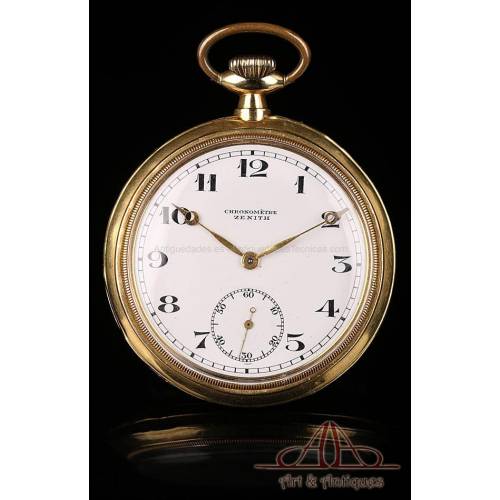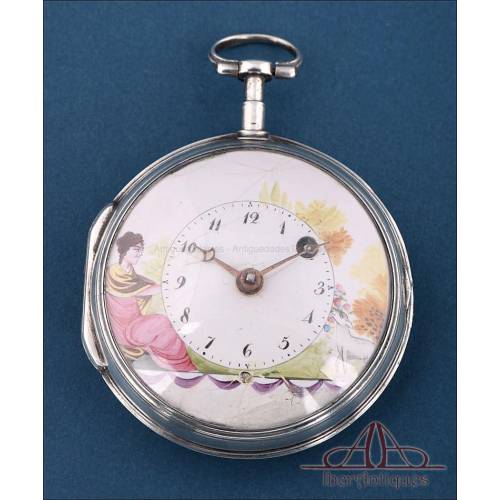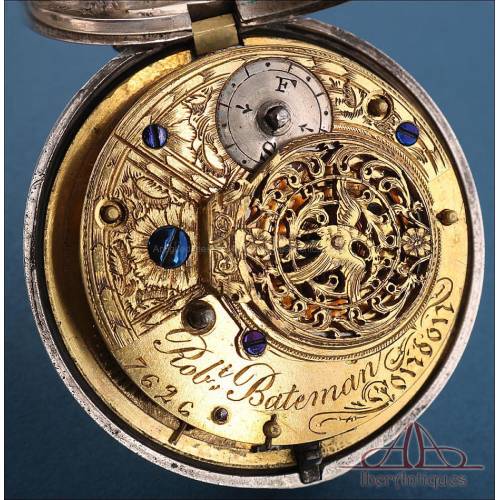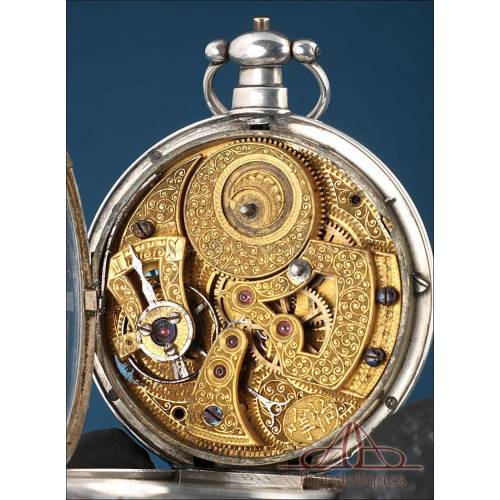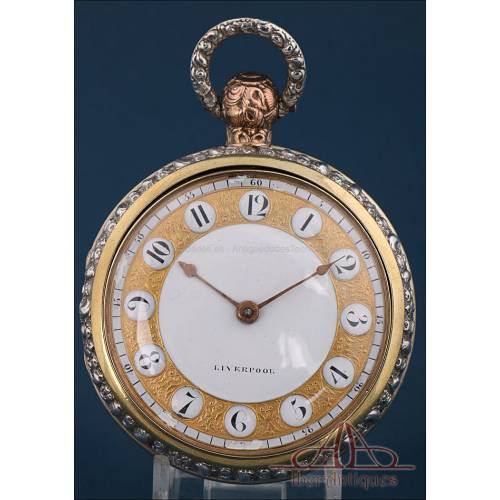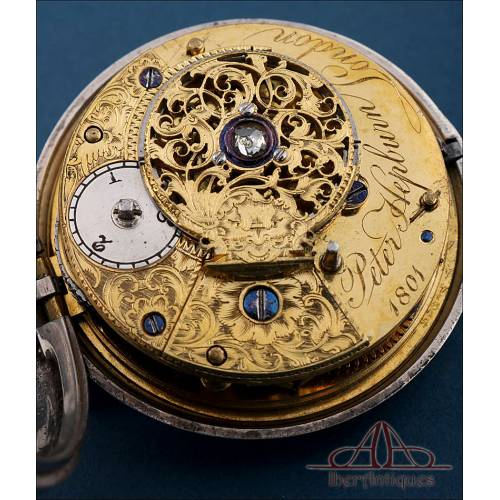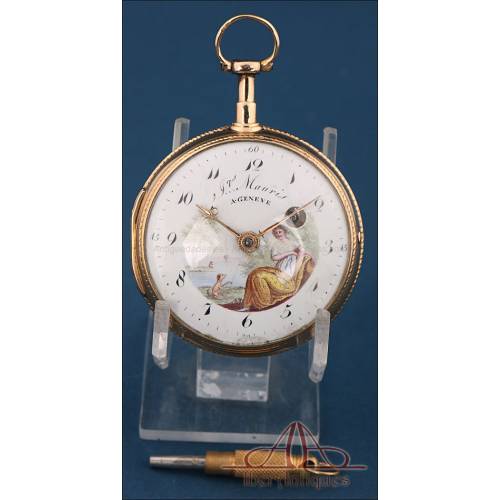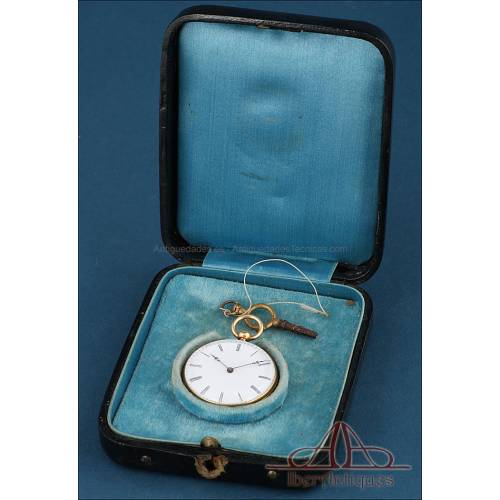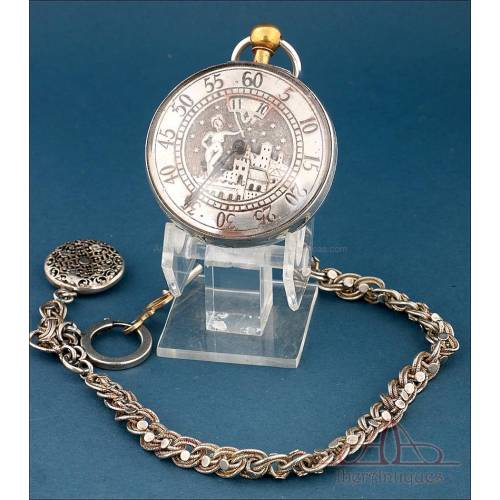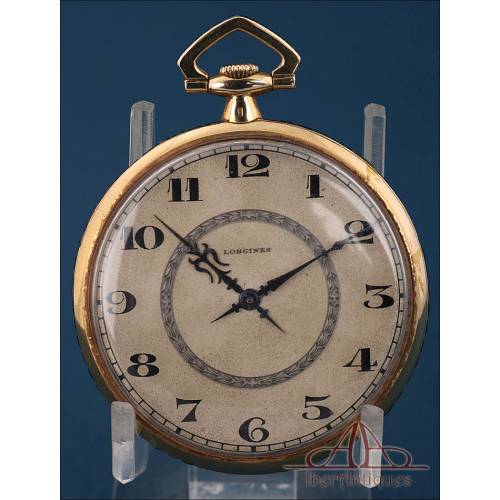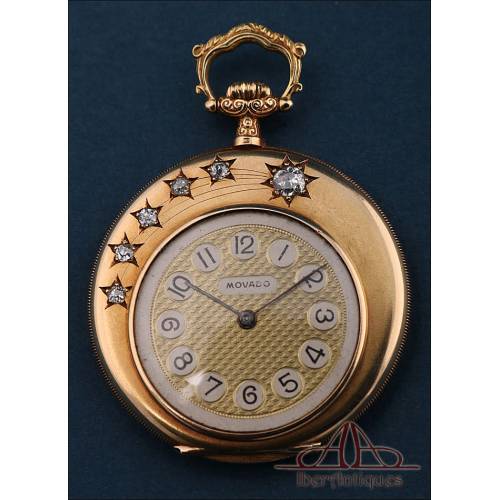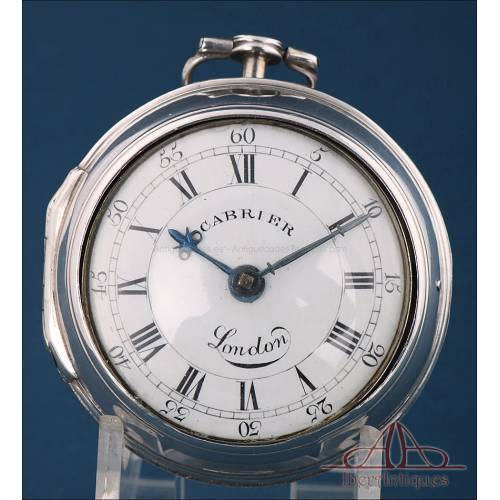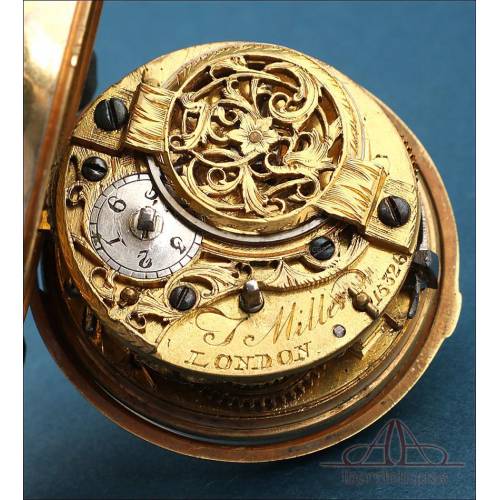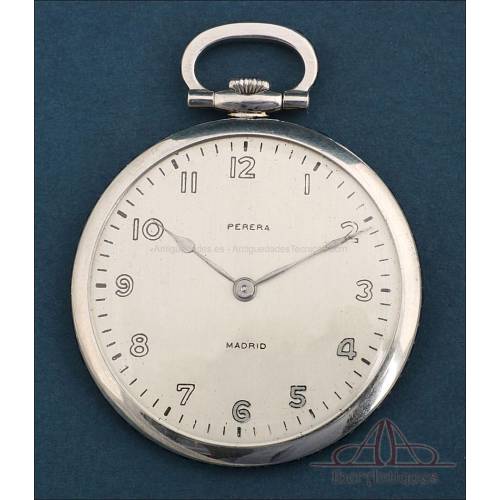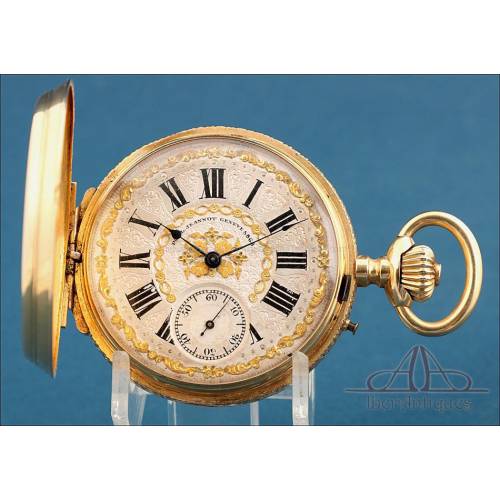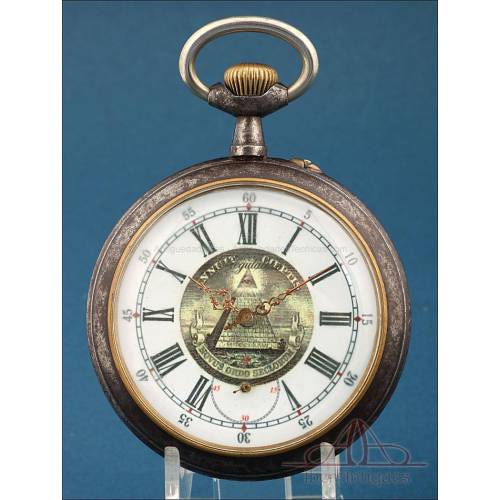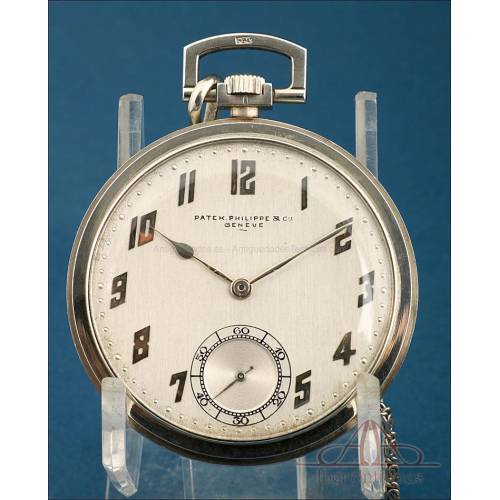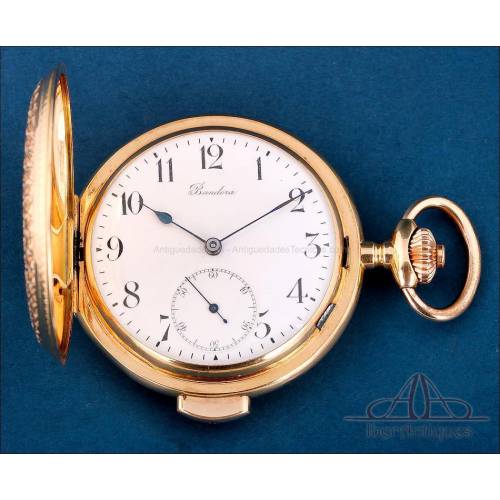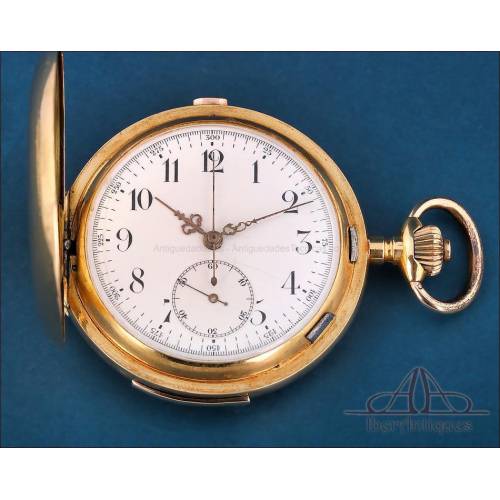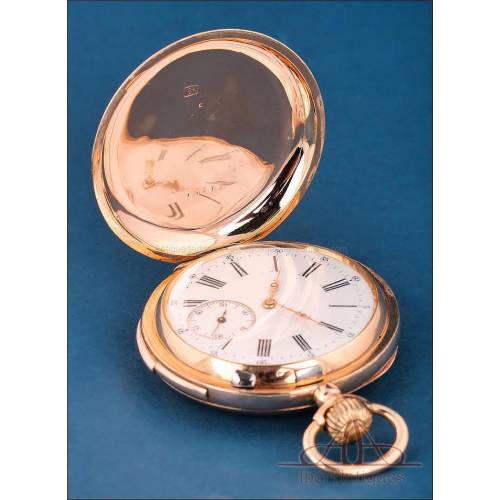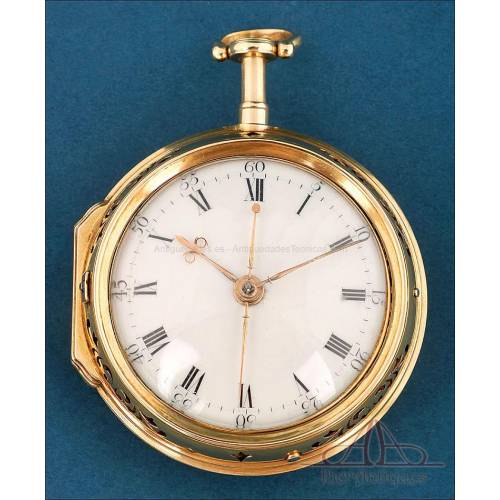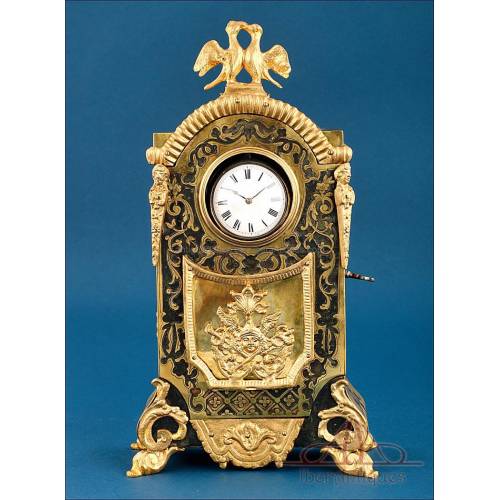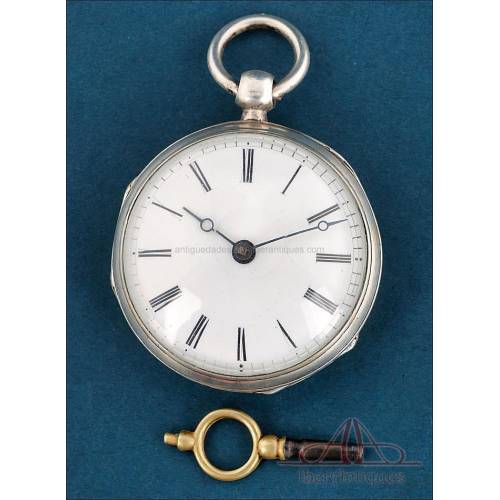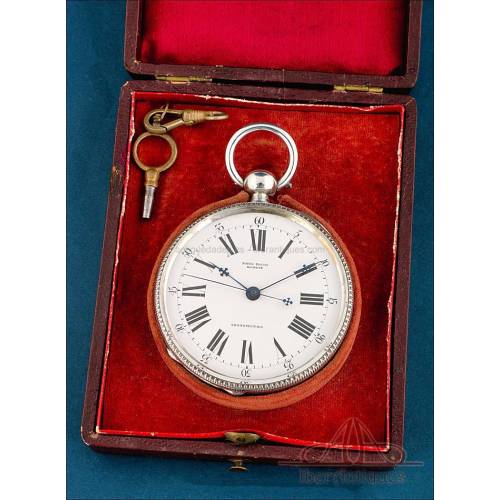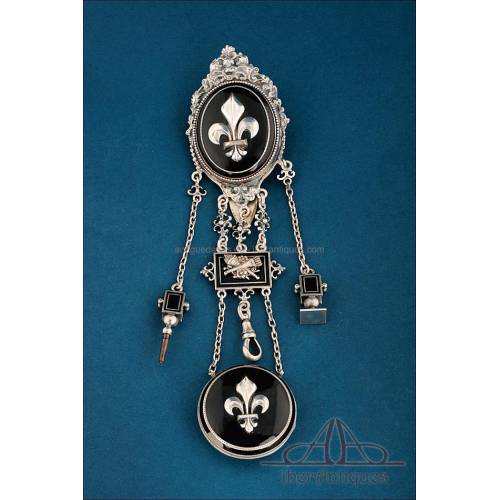E-275
Antique 18 K Gold Verge Fusee Pocket Watch and Chatelaine. England, 1745
Verge fusee pocket watch by John Shaw with 18K gold chatelaine and double case. London, 1745. Outstanding collector's piece.
Antique 18K Gold Verge Fusee Pocket Watch and Chatelaine. England, 1745
A magnificent example of 18th-century English horology, this verge fusee pocket watch is a true masterpiece signed by John Shaw, a distinguished watchmaker active in London around the mid-18th century. The piece is precisely dated to the year 1745, thanks to the official London hallmarks engraved inside the case. These marks not only confirm the authenticity and purity of the gold but also stand as historical witnesses to a period of unmatched artistic and technical refinement.
The watch features two solid 18K gold cases. The outer case, larger and hinged, measures 48 mm in diameter and is richly repoussé-decorated with a classical courtship scene: a gentleman approaching a seated lady. The perimeter is adorned with a border of scrolls and floral elements, framing the central scene with texture and depth. The inner case, simpler in design, is plain gold, measuring 41 mm in diameter, and it retains the crisp English hallmarks certifying its London manufacture. Both cases are in outstanding condition, especially remarkable for a piece nearly three centuries old.
The white enamel dial displays black Roman numerals and elegant blued-steel spear-shaped hands. The original domed crystal is still intact. The verge fusee movement is visible when opening the back and boasts a beautifully pierced and engraved balance cock, featuring floral motifs, a lion’s head, and rococo-style decoration. It is clearly signed “Jn. Shaw – London”, accompanied by the serial number 503. The refined engraving and technical execution reflect the high craftsmanship of the period.
As if that weren’t enough, the watch comes with a spectacular matching gold chatelaine, composed of multiple articulated plaques with mythological and allegorical repoussé scenes. The upper part features a male figure flanked by cherubs, followed by a seated lady with a child in a learning pose, and finally a female figure holding a book. This structure not only complements and enhances the watch but is itself a sculptural artwork worthy of museum display. A decorated winding key hangs from one side, and a gold capsule, likely for perfume or relics, hangs from the other.
Together, the watch and its chatelaine form a harmonious and exceptional set, valuable both aesthetically and historically. This is a piece that reflects the elegance and technical mastery of 18th-century Georgian England. Ideal for museums, expert collectors, or as a centerpiece in a high-level private collection. A one-of-a-kind treasure that connects us directly with the artistic and cultural essence of its time.
An extraordinarily detailed and expressive piece. A true 18th-century wonder.
Dimensions: 17 cm (6.7 in). Diameter: 4.8 cm (1.89 in). Weight: 155.5 g.
History of John Shaw
John Shaw was an English watchmaker active in London during the first half of the 18th century, a golden age of British horology. He was registered as a master watchmaker in Threadneedle Street, a notable area in London’s financial district, home to many renowned watchmakers. His documented activity dates from around 1730 to the early 1750s, and his work is part of the legacy that established England as the foremost center of horological innovation in the 18th century.
Watches signed by John Shaw are highly prized today for their mechanical quality and the artistic finesse of their cases. His pieces often featured floral or allegorical decorations on the balance cocks, a hallmark of Georgian-era craftsmanship. The verge fusee movements he built used a cone-shaped fusee system to equalize the tension of the mainspring and improve timekeeping accuracy.
His signature appears as “Jn. Shaw, London,” and his watches were commonly housed in solid gold or silver cases, intended for an affluent clientele. His precise technique and elegant style make his timepieces highly collectible in international auctions, museums, and private collections.
This particular watch signed by Shaw in 1745, paired with its chatelaine, is not only one of the most beautiful examples of his work, but also a rare relic of an era when horology was a blend of science, craftsmanship, and artistry.

